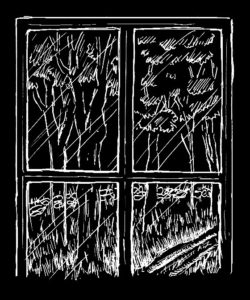
Staring.
For me, staring is a critical part of the creative process. It’s like a meditation except that the rules (actually, non-rules) are to let yourself follow any promising thought that appears in your mind’s eye—as opposed to the “serious” business of following your breath (trust me, it ain’t going anywhere…)
Trees have always been my go-to staring non-object. These days, it’s the swaths of hard and softwoods marching in formation across Mount Wantastiquet (Atowi: Wantastegok Wojo) on the other side of the Connecticut River, or the oaks creating a canopy over Lake Dunmore. (My go-to Abenaki expert says the Native American source of the lake name is elusive.) At other times and places it’s been a row of maples above a steep bank, a single tree in front of an office window, or a whole peach orchard outside a screened-in porch. (Interesting that it’s easier to remember what I stared at more than what I wrote.)
The other day, I got curious about what happens in your brain when you stare. I had images of calming dopamine and happy-go-lucky serotonin molecules zooming around through wide-open neural pathways, leaping headlong into the receptive axons, triggering a brilliant new idea here and then another one there. A cluster f—k of exuberant synapses.
Imagine my concern, if not outright horror, when my quick search yielded references to something called “absence seizures,” a childhood condition caused by “abnormal brain activity” which is, of course, my favorite kind. During one of these seizures, kids will suddenly stop doing what they are doing, their eyelids may flutter, and they might not respond when spoken to (which, I thought, is pretty much what kids do anyway.)
NB: These little “seizures are usually not super serious but people who know a lot more about kids’ brain health than I do say they may be worth checking out.
Creatively productive staring has become harder in the 21st Century now that all human knowledge is at your fingertips. Just when the ideas are starting to float untethered before your mind’s eye, you convince yourself that you immediately have to find out how much stronger fentanyl is than morphine (about 100x depending on the purity); who’s really buried in Grant’s tomb (nobody—he’s in an above-ground sarcophagus); or whether it’s going to snow on Friday (80% chance).
Once you pick up your iPhone to find answers to questions like these, your staring session is essentially over. You might as well open your laptop and put your nose to the grindstone (which refers to millers leaning over to smell whether the stone is getting so hot it’ll scorch the flour).
Don’t worry. Soon, you’ll have another chance to settle back, look out the window, and stare. If you’re lucky you might get to see what Wendy saw as a child.

